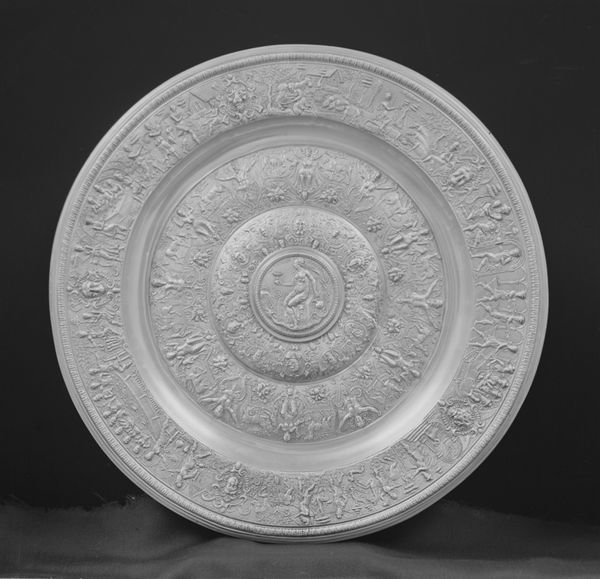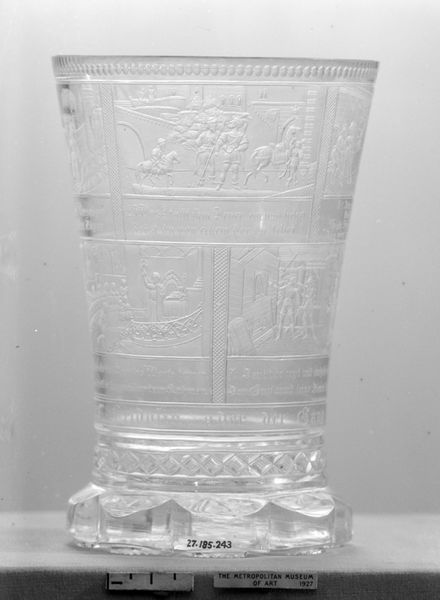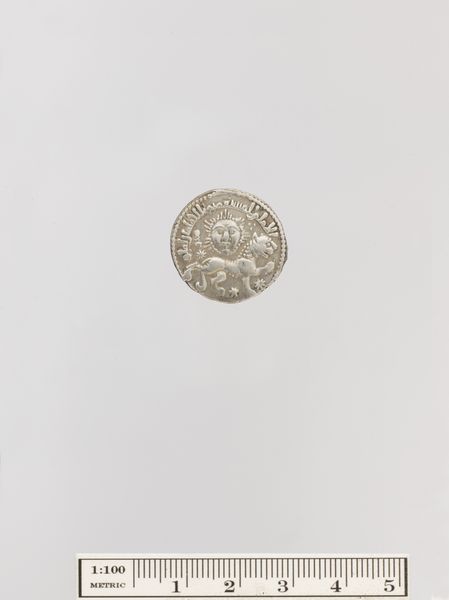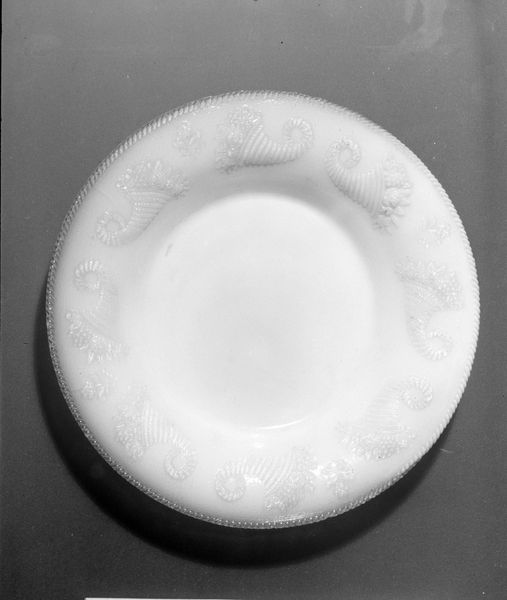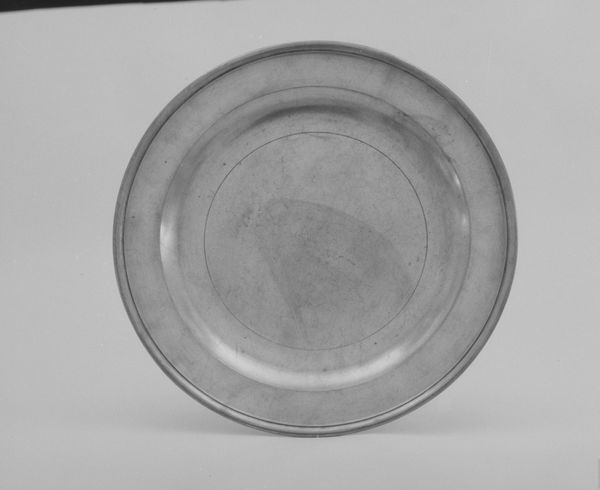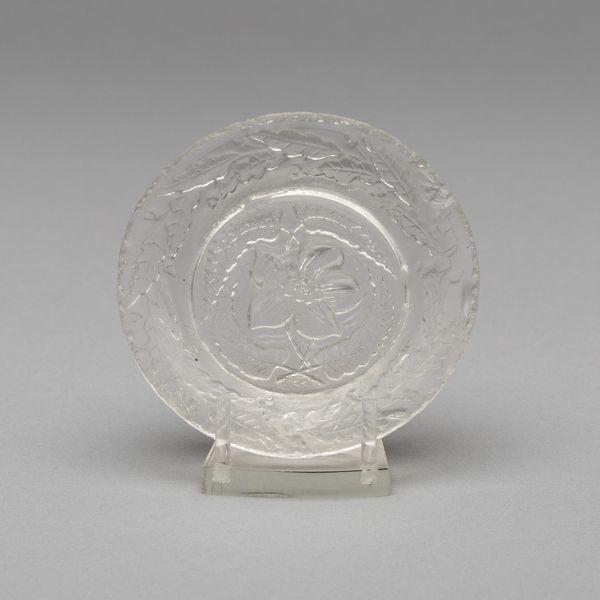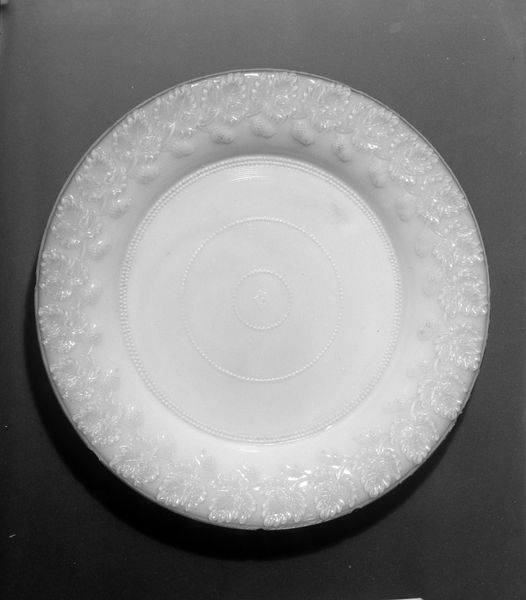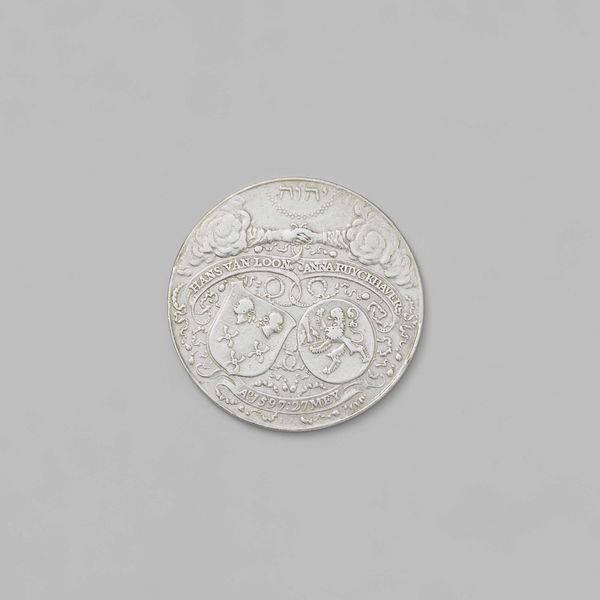
photography, glass
#
decorative element
#
swirl
#
ring
#
photography
#
glass
#
united-states
#
macro photography
#
decorative-art
Dimensions: Diam. 7 15/16 in. (20.2 cm)
Copyright: Public Domain
This glass bowl was produced by the Providence Flint Glass Works between 1830 and 1833. It is an example of pressed glass, a technique that was then at the cutting edge of industrial production. The process involved molten glass being forced into a mold, allowing for the rapid replication of intricate designs. Looking closely, you'll notice the repeating motifs – shields, foliage, and swirling patterns. These were all achieved in a fraction of the time it would take a master glassblower to execute by hand. Pressed glass democratized luxury, making decorative objects affordable to a wider public. But the mechanization also had a social cost, deskilling labor and putting pressure on traditional glassmaking workshops. The bowl thus embodies both the promise and the problem of early industrial capitalism. Appreciating its making is key to understanding its cultural significance.
Comments
No comments
Be the first to comment and join the conversation on the ultimate creative platform.

